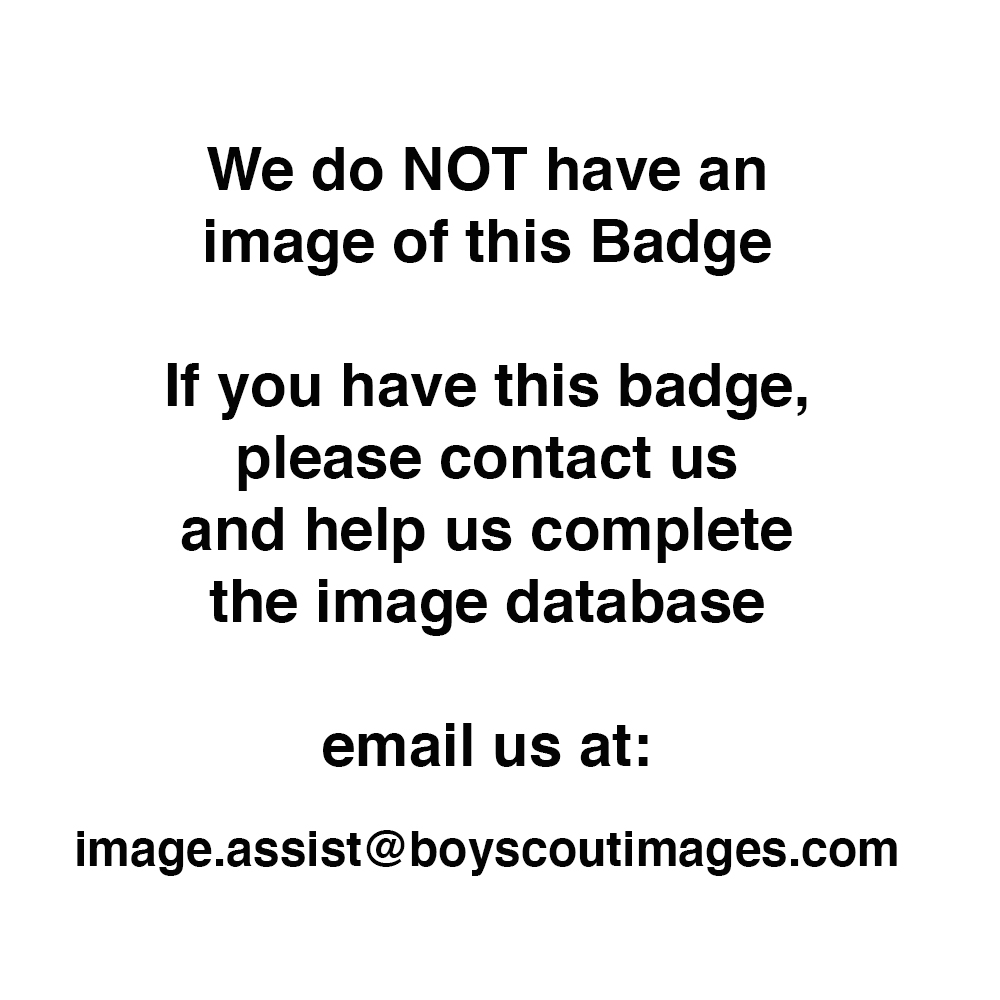
Fig. 1: "Media Not Available"
- Cloth: Heavyweight tan right twill
- Embroidery: Silk continuous
- Border: Counterclockwise, ovalish open

Fig. 2: "Media Not Available"
- Design: Fluid line horizontal, round bowl, straight neck extends below fluid line

Fig. 3: "Media Not Available"
- Back: Brown imprint
Item Name: Chemistry 1912
Item ID: Chemis-AH2
Collector Rating: 9
Requirements June 1911 until August 1911
1. What is a physical change? 2. What is a chemical change? 3. Tell whether a physical or a chemical change takes place when (a) salt is dissolved in water, (b) milk sours, (c) iron rusts, (d) iron is magnetized, (e) water boils, (f) mercuric oxide is heated above the boiling point of mercury. (One credit each.)
2. If you were given five bottles, one filled with oxygen, a second with hydrogen, a third with nitrogen, a fourth with chlorine, and a fifth with carbon dioxide, how would you determine the kind of gas in each bottle? (Two each.)
3. (a) Water, blankets, and water charged with carbon dioxide are used to put out fires. Under what circumstances would each of the above mentioned be used? (Two each.) (b) Give reasons for your answer to (a). (One each.) Why could baking soda be used to extinguish a small fire? (One.)
4. Give a test for (a) a chloride, (b) a sulphide, (c) a sulphate, (d) nitrate, (e) a carbonate. (Two credits each.)
5. Give the names of three commercial forms of carbon (Three.) Tell how each form is made. (Three.) For what is each form used? (Three.) What compound is formed when carbon burns in air? (One.)
6. Starting with limestone, first tell how to make lime, then tell how to slake the lime and make mortar. (Six.) In a recently plastered room why would the plaster be hardened more rapidly by burning charcoal in open vessels than by heating the room by steam radiators? (Four.)
Requirements August 1911 until October 1914
1. Define physical and chemical change. Which occurs when salt is dissolved in water, milk sours, iron rusts, water boils, iron is magnetized and mercuric oxide is heated above the boiling point of mercury?
2. Give correct tests for oxygen, hydrogen, nitrogen, chlorine, and carbon dioxide gases.
3. Could you use the above gases to extinguish fire? How?
4. Why can baking soda be used to put out a small fire?
5. Give tests for a chloride, sulphide, sulphate, nitrate, and carbonate.
6. Give the names of three commercial forms of carbon. Tell how each is made and the purpose for which it is used.
7. What compound is formed when carbon is burned in air?
8. Tell process of making lime and mortar from limestone.
9. Why will fresh plaster harden quicker by burning charcoal in an open vessel near it
